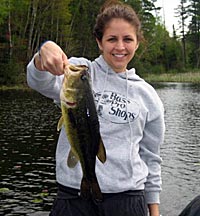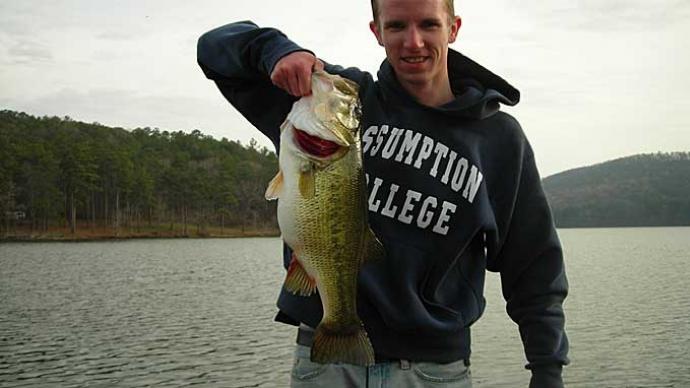
Perhaps Destroy is too strong of a word, but when on the lake, you need to attack the water to maximize your time fishing. There are always limits to the amount of time you have on the water, and even if that time is unlimited, the best fishing times are often compacted into particular and short periods of the day. To that end, a critical strategy that helps you catch more fish and stay on task is utilizing different baits to cover the maximum amount of water and then slowing down in high-potential areas.
Search
So, how do you use different bass fishing lures to your advantage? There is a wide array of lures available to every fisherman, but many people don't think about how they are meant to be used to increase their catch rate. I tend to put lures into two broad categories - those with a fast presentation (Search) and those with a slow presentation (Destroy.) The thought process is to use a fast working lure to cover as much water as possible as fast as possible. Think crankbait or spinnerbait. Spinnerbaits work well in shallow areas but cannot be fished fast in deep water (you can slow roll them to the depths, but this takes away covering water fast.) This is where the crankbait shines. Crankbaits can be fished fast, and you can choose the depth you are targeting with a lure meant to swim at that depth. The entire idea of this portion of your Search and Destroy mission is to seek out active bass, so make sure to fan cast across whatever structure you are working on to locate active fish. Ideally, you will use your trolling motor to continually move and cover water. If you don't want to use your trolling motor or don't have one, drifting with the wind can be effective also. The problem with drifting is that you are at the mercy of the wind as to the direction and speed you are moving.
Once you catch a fish on your Search mission, mark the spot at least with your mind and preferably with a GPS way-point and marker buoy. If there is one fish there, there are likely more. After you have worked over your area and marked where you caught fish, it will help to make at least one more pass with your fast-moving bait to try and pick off all the remaining aggressive fish in the area. A good rule of thumb is if you caught a fish or had a strike on any given pass, keep fishing your fast presentation. In other words, don't fix it if it isn't broken! I will cast with a fast presentation all day long if it continues to catch fish. Once the fast bite slows or all you are catching is small bass, that is the time to bring in the destroy part of your mission.
Destroy
After you have finally picked off all the active fish from the structure, it is time to slow things down and search for the neutral to negative-minded fish. These bass need more coaxing to get them to join you in the boat. The lures you will utilize in this Search and Destroy mission segment are mostly soft plastics, although one can slow many other types of lures. I like to use either a Texas rigged worm or a Senko-type bait without any weight.
Again, you begin the Destroy portion of your mission using the spots you marked where the active fish bit earlier. Bass are a schooling fish, and if there were active school members on this particular lake, there are more than likely a bunch of neutral and negative-minded fish. They won't go and chase that fast bait you buzzed past their face, but the intelligent fisher that you are is going to bring something to their plate. Even when they are not hungry, bass have difficulty passing up an easy meal.
Using your slow presentation, you should work over this area methodically, reeling in fish as you present your soft plastic lure right in front of their faces. The beauty is that you can still catch any straggler active fish with this method. There are days when you can still move the bait fast and catch fish. Just keep in mind that some days you need to slow things down. Let the lure sit at the bottom for a count of five or maybe even up to thirty. If the fish are in a negative mood, this ultra-slow approach can work wonders to get more and bigger fish into your boat.
This Search and Destroy methodology will lead to more fish in your boat. Try it on your favorite lake and note the results. Sometimes entire fisheries don't see a logical approach like this, which gives you an edge over your fellow bass fishing brethren. After all, fish aren't the only animal that tends to display pattern tendencies. Fishermen are also known to do the same things repeatedly, and if that is a haphazard approach to targeting bass, then you will definitely outclass them. Remember that a logical, targeted approach is deadly when catching largemouth bass.
John Olson, Ph.D., loves to hunt and fish. He especially loves to utilize new fishing lures to catch fish. The search-and-destroy method mentioned in this article is not necessarily cutting edge, but it is highly effective and not employed as much as people think.




